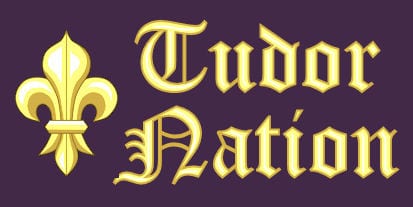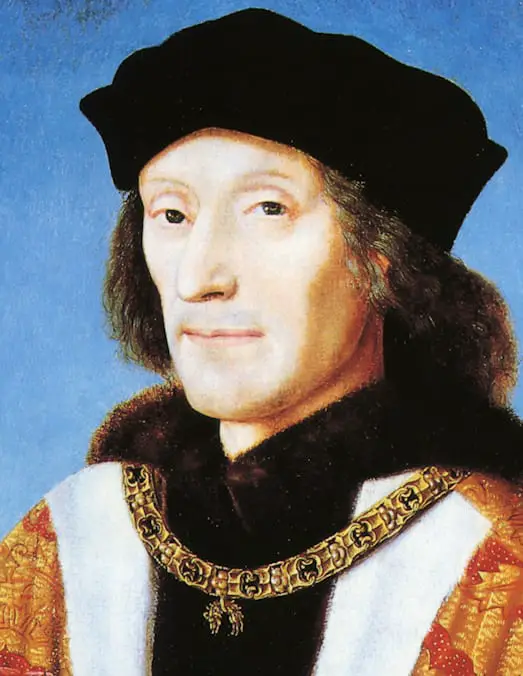
King Henry VII was the first Tudor monarch. He came to the throne in 1485 after winning the Battle of Bosworth Field. His reign laid the foundation for the Tudor dynasty.
Background
King Henry VII was born on 28th January 1457 at Pembroke Castle, Wales. His mother was thirteen year old Margaret Beaufort, daughter of John Beaufort. His father, Edmund Tudor, Earl of Richmond, half brother to the Lancastrian King Henry VI, had died before he was born. Henry Tudor inherited his father’s title Earl of Richmond.
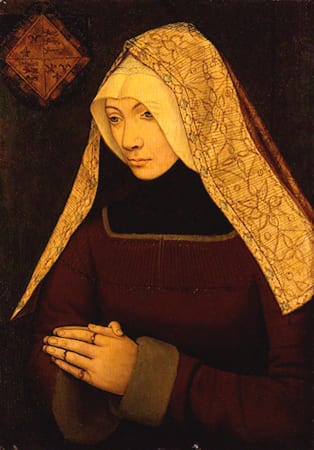
Henry VI was a weak King who relied on his wife and his favourites and suffered bouts of insanity. In 1455 Richard Duke of York had challenged his place on the throne and the Wars of the Roses had begun. Edmund and his brother, Jasper Tudor, had chosen to support King Henry VI. In 1456, Edmund was captured and imprisoned in Carmarthen Castle where he died of bubonic plague. A year after the birth of Henry, Margaret Beaufort married Henry Stafford.
In 1461, Edward, the son of Richard Duke of York defeated the Lancastrians at the battles of Mortimer’s Cross and Towton. He took the throne as King Edward IV.
Childhood
Henry Tudor left the care of his mother when he was made the ward of William Lord Herbert in February 1462. In 1470 Henry VI was restored to the throne and young Henry was allowed more contact with his mother. When Edward IV regained the throne six months later, Henry VI was murdered. As the Lancastrian heir to the throne, Henry Tudor was in danger. His uncle Jasper took him to Brittany.
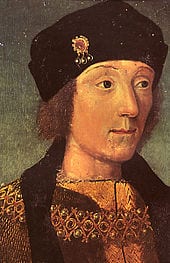
Exile
In Brittany, Henry and his uncle were given protection by Francis II, Duke of Brittany. They were comfortably housed in the Chateau de Suscinio. The Duke ignored requests by Edward IV to extradite the pair to England. However, in 1476 the Duke was finally convinced by Edward IV that he would not harm Henry Tudor but wanted to marry him to one of his daughters. Arrangements were made to hand Henry to the English. However, before he could be handed over, Henry Tudor either became ill or feigned illness. He was taken to a monastery where he claimed sanctuary. Edward IV made no further attempt to have Henry returned to England.
Princes in the Tower
In April 1483, King Edward IV died. His young son became King Edward V with his uncle, Richard, Duke of Gloucester as regent. Edward V was placed in the Tower of London to await his coronation and was soon joined by his younger brother, Richard. Shortly afterwards, Richard declared the children of Edward IV to be illegitimate because Edward IV had been contracted to marry Eleanor Butler at the time of his marriage to Elizabeth Woodville. This meant that Richard was next in line to the throne and he was crowned King Richard III. The two princes in the tower of London were never seen again.
Scheming Mothers
Henry’s mother, Margaret Beaufort, had married Thomas Stanley, steward to King Edward IV. She became a member of the court and quickly befriended Edward IV’s wife, Elizabeth Woodville. After Richard took the throne, the two women worked together to effect Henry Tudor’s return to England at the head of an army to depose Richard.
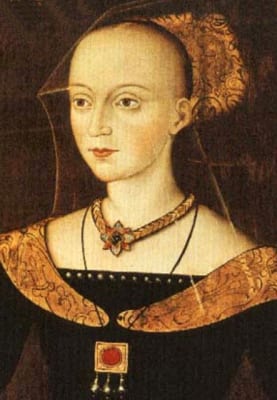
It was agreed that Henry would marry Elizabeth of York, eldest daughter of Elizabeth Woodville and Edward IV. On 25th December 1483 Henry publicly swore an oath at Reims Cathedral that he would marry Elizabeth of York once he was King of England.
Battle of Bosworth Field
On 1st August 1485, Henry Tudor landed at Milford Haven. He marched inland gaining support along the way. He reached Market Bosworth on 21st August.
On 22nd August 1485 the forces of Henry Tudor and Richard III met in battle. Thomas, Lord Stanley and Sir William Stanley had not decided which side to support. They and their armies remained on a hill overlooking the battlefield. They finally joined the battle on Henry’s side. Shortly afterwards, Richard III was killed and Henry was proclaimed King Henry VII.
First Year as King
Henry Tudor was crowned King of England and Wales on 30th October 1485 in Westminster Abbey. He immediately repudiated the law that had declared the marriage of Elizabeth Woodville and King Edward IV invalid. He also kept his word and married Elizabeth of York. The Tudor Rose was created by merging the white rose of Lancaster with the red rose of York and signified an end to the Wars of the Roses.
Prince Arthur was born on 20th September 1486. Henry was delighted to have a son to carry on the Tudor dynasty but was also aware that he needed more sons to ensure the future of the dynasty.
Pretenders to the Throne
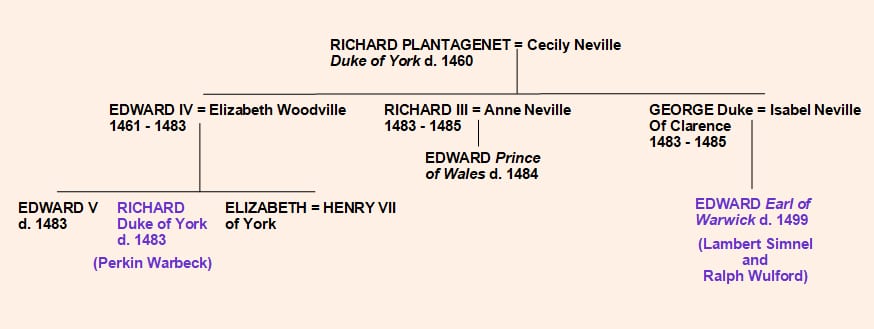
Henry’s position was threatened by three pretenders to the throne. Lambert Simnel was the first, appearing in 1487. He claimed to be Henry’s cousin, Edward Earl of Warwick. The real Earl of Warwick was imprisoned in the Tower of London and Henry paraded him through the streets to show Simnel was an impostor. Simnel’s supporters were defeated at the Battle of Stoke Field. Henry realised that Simnel had been used by his opponents and gave him a position in the royal kitchens.
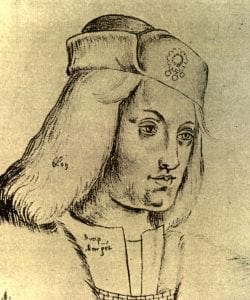
Perkin Warbeck presented a more serious challenge since he was backed by Margaret of Burgundy, sister of King Edward IV, King Charles VIII of France, Holy Roman Emperor Maximilian and King James IV of Scotland. He appeared in 1492 and claimed to be Richard Duke of York, son of Edward IV. It took five years of negotiations and conflict before Warbeck was captured and exposed as a pretender.
When Ralph Wulford appeared in 1499, claiming to be Edward Earl of Warwick, Henry wasted no time in having him captured and executed. Perkin Warbeck, who was imprisoned in the Tower of London and Edward Earl of Warwick were also executed.
Foreign Policy
(See main article – Henry VII’s Foreign Policy)
Henry Tudor was a frugal man and, aware of the high cost of war, preferred to settle disputes by diplomacy rather than conflict.
By 1489 Henry reigned over England, Wales and the Channel Islands. He held the title Lord of Ireland which had been passed down from the twelfth century but he had little control over Irish affairs. The marches of Calais and the castle of Guisnes, both in France, were held by the English and the king of England was technically entitled to call himself King of France. However, Henry VII, agreed not to use the title provided he received a yearly pension from the French King.
In retaliation for Margaret of Burgundy’s support for Perkin Warbeck, Henry placed a trading embargo on Antwerp and then negotiated a trade agreement with the Netherlands that included a phrase stating that neither side would give aid to the other’s enemies.
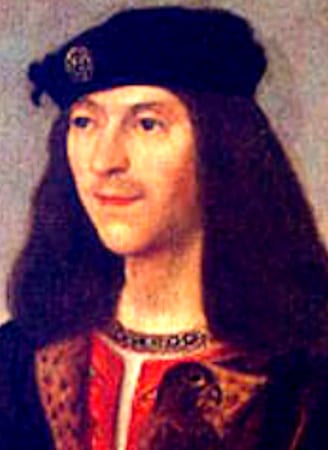
Similarly King James IV was offered the hand in marriage of Henry’s eldest daughter, Margaret Tudor and a peace deal if he withdrew support from Warbeck.
The Treaty of Medina del Campo 1489, provided for the marriage of Prince Arthur to Catherine of Aragon, daughter of the Spanish monarchs, Ferdinand and Isabella. Spain was the dominant force in Europe and a useful ally to the new Tudor dynasty.
In 1507 he successfully negotiated a treaty with Philip of Burgundy that would be sealed with the marriage of Princess Mary to Philip’s son, Charles.
Taxation
King Henry VII was determined that the Tudor dynasty would be financially secure and kept a Book of Rates that listed rates of tax payable. He revised the rates twice during his reign. The 1490’s increase brought in around £33,000 per year while the 1507 increase brought £40,000.
By the end of his reign he had become increasingly unpopular due to the financial burden placed on his people. A man now had to pay a tax to: gain his inheritance, to marry an heiress, to sell property and to hunt in royal forests. Henry had also introduced ‘Feudal Aids’. These were taxes payable to cover the cost of state functions such as the weddings of Prince Arthur and Princess Margaret.
Family
King Henry VII married Elizabeth of York on 14th January 1486 at Westminster Abbey. They had eight children:
Arthur born 19th September 1486
Margaret born 28th November 1489
Henry born 28th June 1491
Elizabeth born 2nd July 1492
Mary born 18th March 1496
Edward born 1498
Edmund born 21st February 1499
Katherine born 2nd February 1503
Tragedy
On 14th September 1495 Henry and Elizabeth’s daughter, Elizabeth died. This was a blow because Henry had been negotiating a treaty with France to be sealed with the marriage of Elizabeth to the dauphin, Francis.
Henry’s sons Edward and Edmund both died before they were a year old in 1499 and 1500 respectively.
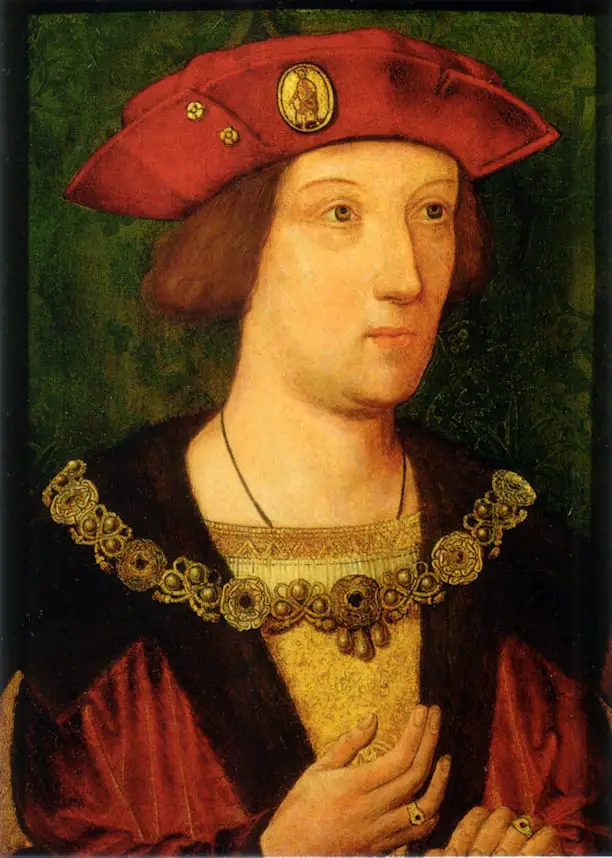
Henry’s eldest son and heir, Prince Arthur, had married Catherine of Aragon on 14th November 1501. After the Christmas festivities the newly-wed couple departed for the Welsh Marches. In March 1502 both were struck with a viral illness and on 2nd April Arthur died. Henry and Elizabeth were devastated at the loss of their eldest son. They were also fearful for the future of the Tudor dynasty as Prince Henry was the sole remaining male heir. Elizabeth, who was thirty-seven years old, became pregnant and they hoped for a son.
In February 1503 Elizabeth of York gave birth to a daughter, Katherine. The child died on 10th February and Elizabeth died a day later.
Remarriage
With only one surviving male heir, Henry knew that the Tudor line was not secure. He therefore began to think of remarrying. His first choice was Arthur’s widow, Catherine of Aragon, who was in good health and looked strong enough to bear sons. Her dowry was settled and Henry thought that the Spanish sovereigns would approve the match. They did not. Instead they pressed for the marriage of Catherine and Prince Henry to go ahead.
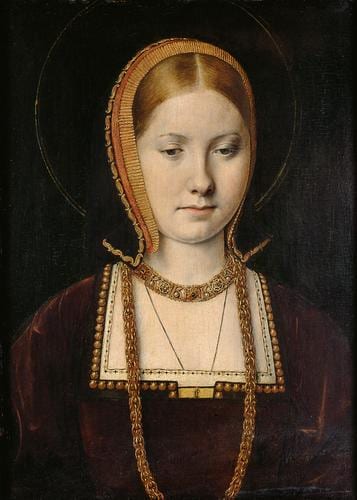
In 1505 Henry sent an embassy to Spain to report on the suitability of the widowed Joanna Queen of Naples as a bride. However, when he discovered that the young lady was penniless Henry abandoned thoughts of marrying her. His thoughts turned to Margaret of Savoy as a possible bride. Philip of Burgundy, who was in England in January 1506 after being shipwrecked, gave formal assent for the marriage of his sister, Margaret of Savoy, to King Henry VII of England. He agreed that she would bring a dowry of 300,000 crowns. Margaret of Savoy was not happy and stated that she would never marry the King of England who was old enough to be her father.
Final Years
By 1508 Henry’s heath was beginning to fail. He had lost weight, had a nasty cough and could not walk unaided. In March 1509 Henry collapsed. He rallied slightly but it was clear he was dying. He dictated his will on 31st March and died on 21st April 1509. King Henry VII was buried in a chapel in Westminster Abbey. He had left money in his will for the chapel, known as the Henry VII chapel, to be built.
Published Jun 2020 – Updated – Nov 23 2024
Harvard Reference for this page:
Heather Y Wheeler. (2020 – 2025). King Henry VII 1457 – 1509 Biography Available: https://www.tudornation.com/king-henry-vii-1457-1509 Last accessed April 16th, 2025
